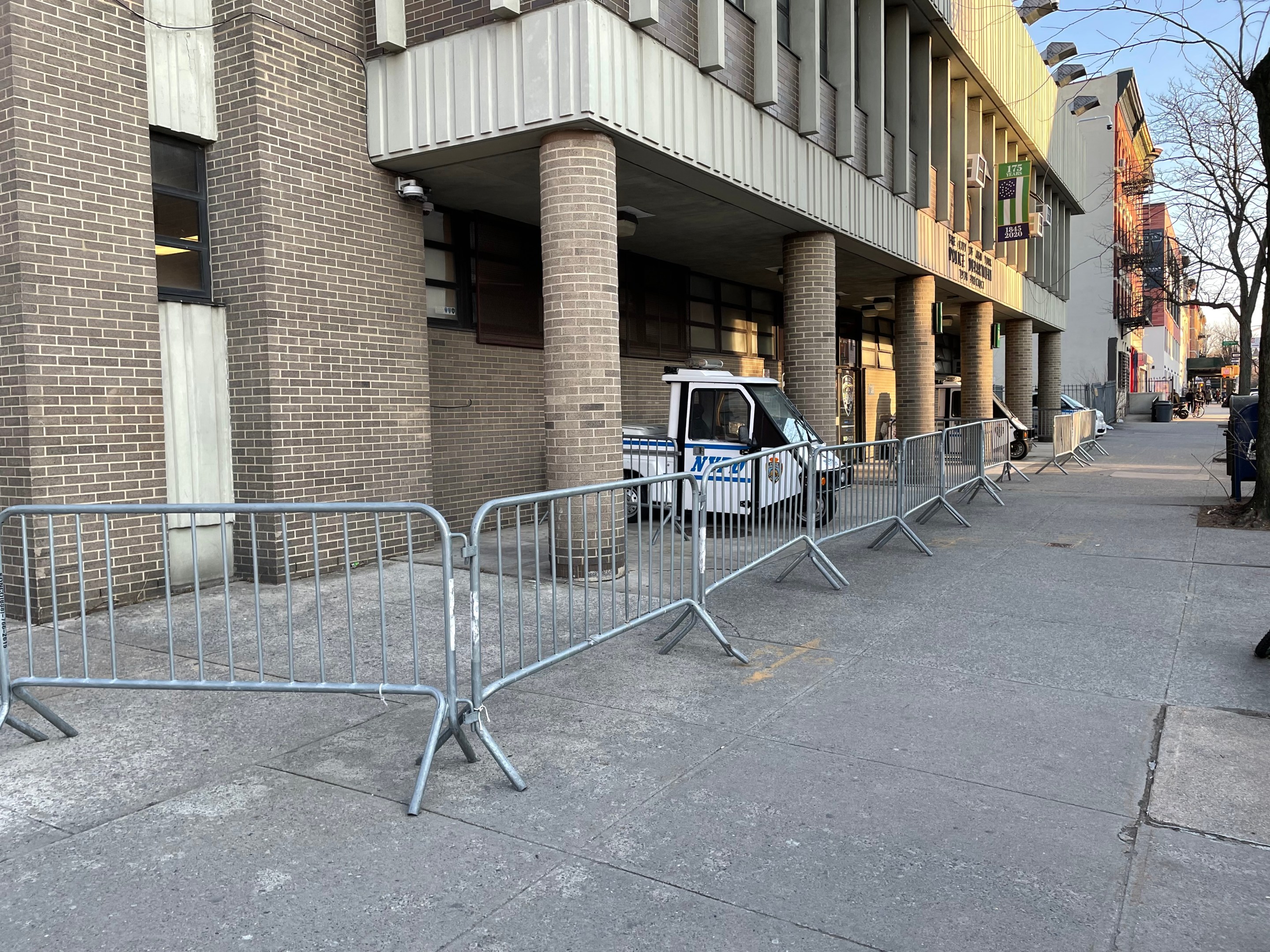Mayor de Blasio once again promised on Friday to rein in rogue police precincts that continue to steal public sidewalks and streets in a way that endangers pedestrians, cyclists and drivers — a promise he has made before on a situation that he has failed to fully correct.
On WNYC's Brian Lehrer show, the mayor was asked by "Dan from the Lower East Side" about the long-documented scandal of the NYPD ringing many of its police stationhouses in steel barricades. The caller suggested that an NYPD that claims it seeks to be a neighborhood partner was, in fact, militarizing communities with very physical (and obviously symbolic) dividers that "take over" public space.
"I get what you're saying that this creates an atmosphere and it's better to have less," the mayor started, though quickly added that "there may be situations" where ongoing protests "come back to a particular precinct" that would require more precinct security. But Hizzoner did promise to "follow up" with his City Hall team and with the NYPD about "where we could reduce that. ... I do hear your point and let me see if we can identify specific locations."
He did not, as many critics immediately decried on social media, order NYPD Commissioner Dermot Shea to simply stop the widespread practice of police swiping public space.
Nonetheless, Streetsblog readers offered a few of the specific locations that the mayor should investigate: the problem continues at he Seventh Precinct on the Lower East Side, around the Washington Square Park arch, at the Fifth Precinct in the East Village and others.
It's not the first time de Blasio has discussed the situation. After a Streetsblog investigation in June 2020 found many precincts still ringed by barricades, de Blasio said he would look into it.
The issue of how police police the streets around their own stationhouses remains an Achilles heel for the de Blasio administration. A Streetsblog investigation into police parking last year showed that police officers' personal vehicles are often left haphazardly around stationhouses, which are not only ringed by barricades, but by combat-parked squad cars. As a result, chaos reigns:
We looked at crashes from from the start of 2018 until the dawn of the pandemic in 2020, and found that station houses that face a public street have far more crashes on that block than on blocks on either side of the station house. More specifically:
- 70 precincts had a higher number of crashes on the precinct block than on streets directly on either side of the station house. Only four precincts in the entire city — the 62nd in Bensonhurst, the 90th in Greenpoint, and the Fifth and 23rd in Manhattan — had fewer crashes on the block in front of the station house.
- The increase in crashes on a precinct block versus the neighboring blocks varies by precinct and borough:
- In Manhattan, the average precinct block had more than double the crashes (118 percent more) than the blocks on either side of the station house.
- In The Bronx, the average precinct block had 75 percent morecrashes than the blocks on either side of the station house.
- In Brooklyn, the average precinct block had more than triple the crashes (204 percent more) than the blocks on either side of the station house.
- In Queens, the average precinct block also had more than triple the crashes (232 percent more) than the blocks on either side of the station house.
- Staten Island had similar numbers, but the results were heavily skewed against the NYPD because one precinct block contains a busy supermarket with a large parking lot, and it is likely that the supermarket bears a disproportionate share of the blame for crashes.
This story will be updated, with help from our readers. Please send your confidential tips to tips@streetsblog.org






